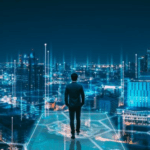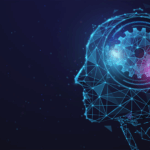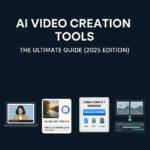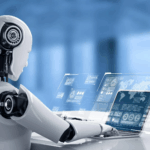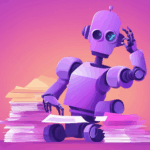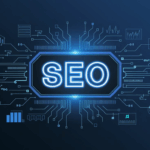Introduction to AI Milestone 2026
Artificial Intelligence has been one of the most transformative technologies of the 21st century. From powering chatbots and recommendation engines to enabling breakthroughs in healthcare and robotics, AI has steadily reshaped industries and daily life. But while the years between 2020 and 2025 laid the foundation for rapid AI growth, 2026 is widely seen as a defining milestone year — one where multiple innovations converge to push artificial intelligence into a new era.
The AI milestone 2026 is not just about one breakthrough; it represents a collection of achievements across generative AI, robotics, healthcare, business automation, and governance frameworks. Together, these advancements mark a turning point where AI moves from being a powerful tool into a deeply embedded layer of global society.
Why does 2026 stand out?
- It is the year when AI adoption becomes mainstream across small businesses, education, and public services.
- Multiple industries — from medicine to climate science — witness AI breakthroughs that were once considered science fiction.
- Governments begin implementing formal regulations and ethical frameworks for responsible AI use, shaping its long-term role in society.
In this article, we’ll explore:
- The key AI breakthroughs of 2026 that define this milestone.
- The most important AI trends shaping the future of technology and society.
- A timeline of advancements (2020–2026) leading up to this point.
- The challenges and opportunities AI presents as we step into the late 2020s.
By the end, you’ll understand why AI Milestone 2026 matters — not just for technologists and businesses, but for everyone navigating the future of work, life, and innovation.
AI Breakthroughs 2026
The year 2026 marks a collection of groundbreaking AI achievements across industries. These breakthroughs demonstrate how far artificial intelligence has come since the early 2020s, and why this year is being called a true milestone.
Advancements in Generative AI
Generative AI has evolved from producing text and images to handling multimodal tasks with ease. By 2026, AI systems are capable of:
- Simultaneous text, image, and video generation — creating entire marketing campaigns from a single prompt.
- Voice + Visual integration — AI assistants that can analyse a video, summarise its content, and answer questions about it in real time.
- 3D and AR content generation — enabling industries like gaming, film, and design to build immersive experiences faster and cheaper.
Example: In 2026, businesses can launch an entire TikTok campaign — from video script to visuals to captions — within hours using multimodal AI platforms.
AI in Healthcare Innovations
Healthcare has always been one of the most promising use cases for AI, and in 2026, it reaches new heights:
- Precision medicine: AI can analyse genetic data and suggest personalised treatments tailored to individuals.
- AI diagnostics: Systems achieve near-human accuracy in identifying cancers, heart conditions, and rare diseases from scans.
- Robotic surgery assistants: AI-powered robots support surgeons with higher precision, reducing risks in complex operations.
Impact: Millions gain access to faster, more affordable healthcare, particularly in underserved regions.
AI in Business & Automation
Enterprises in 2026 are deeply dependent on AI for day-to-day operations:
- AI co-pilots assist employees across industries — from drafting contracts to building presentations.
- Customer experience AI powers chatbots that deliver human-like support across multiple languages.
- AI-driven decision-making helps CEOs and managers make data-backed strategic moves in real time.
Example: Retailers use AI to forecast demand and adjust supply chains instantly, cutting waste and improving efficiency.
AI in Robotics & Autonomous Systems
2026 also marks huge progress in robotics and autonomy:
- Self-driving cars expand from pilot projects to wider adoption in urban areas.
- AI drones support logistics, agriculture, and even emergency rescue missions.
- Industrial robotics leverage AI to adapt to new tasks without extensive reprogramming.
Impact: Factories, farms, and cities are seeing greater efficiency, safety, and productivity thanks to AI-driven machines.
AI Trends 2026
Beyond individual breakthroughs, AI milestone 2026 is defined by broader trends that shape how artificial intelligence integrates into society, business, and governance. These trends highlight the direction of AI adoption and the challenges/opportunities it brings.
AI Regulation & Ethical Frameworks
By 2026, governments around the world have realised that AI can’t be left unchecked.
- AI laws and governance are rolled out in the U.S., EU, and Asia, focusing on transparency, data privacy, and accountability.
- The EU’s AI Act becomes a global benchmark, requiring companies to disclose how algorithms are trained and used.
- Regulations around deepfakes, misinformation, and biometric surveillance tighten, ensuring ethical use of AI.
Impact: Businesses now need AI compliance officers to ensure they meet legal standards, much like data protection roles created after GDPR.
AI Democratization
AI is no longer a tool just for tech giants. By 2026:
- Small businesses, startups, and educators are using AI platforms for marketing, design, and customer engagement.
- Open-source AI projects make advanced models accessible to individuals.
- Cloud-based platforms allow anyone with an internet connection to leverage powerful AI capabilities.
Impact: AI democratization means a level playing field — even small players can compete with established corporations.
AI + Human Collaboration
Instead of replacing humans, AI increasingly acts as a co-pilot for workers.
- Employees in marketing, law, healthcare, and software development now work side by side with AI assistants.
- Tasks like research, drafting, and analysis are automated, leaving humans to focus on strategy, creativity, and empathy.
- This trend fuels the rise of the “augmented workforce.”
Impact: Productivity skyrockets, but employees also need AI literacy training to work effectively with these systems.
AI and Climate Solutions
Sustainability emerges as a major theme in AI milestone 2026.
- AI systems optimize energy grids, water usage, and agriculture for efficiency.
- Predictive climate models help governments prepare for natural disasters.
- AI-driven innovation leads to smarter green technologies like carbon capture and renewable energy management.
Impact: Artificial intelligence isn’t just about profits — it becomes a vital ally in the fight against climate change.
AI Advancements Timeline (2020–2026)
The journey to AI milestone 2026 is the result of rapid innovation and adoption across the first half of the decade. Here’s how artificial intelligence evolved year by year:
2020 – The Foundation of Generative AI
- AI models like GPT-3 demonstrated human-like text generation for the first time.
- Early use cases appeared in copywriting, chatbots, and customer service.
- AI adoption was still limited, but the potential for creative industries became clear.
2021 – Rise of AI Adoption in Businesses
- Companies began experimenting with AI-powered automation in marketing and operations.
- Tools like Jasper AI and Copy.ai entered the mainstream for content creation.
- Discussions on AI ethics and bias grew louder as adoption expanded.
2022 – AI in Everyday Life
- AI assistants became more accessible to individuals and small businesses.
- AI-powered design tools like Canva and VistaCreate started offering automation features.
- Early AI regulation debates started in the EU and U.S.
2023 – The Breakthrough Year of Generative AI
- ChatGPT and similar tools exploded in popularity, shifting public awareness of AI.
- AI moved beyond niche communities into mainstream consumer use.
- AI-generated art, music, and video entered the creative economy.
2024 – Expansion Into Multimodal AI
- AI advanced from text to multimodal models — capable of handling images, video, and voice.
- Businesses began experimenting with AI copilots to augment employees.
- AI in healthcare reached new milestones in diagnostics and drug discovery.
2025 – Regulatory Push and Wider Adoption
- Governments introduced draft versions of AI regulatory frameworks.
- AI adoption expanded in education, e-commerce, and climate modelling.
- Early tests of AI robotics in urban logistics started shaping smart cities.
2026 – The Milestone Year
- AI becomes mainstream: accessible to all businesses, students, and individuals.
- Generative AI evolves into multimodal assistants capable of managing entire workflows.
- Healthcare AI moves from pilot programs to everyday practice.
- Regulations and ethical standards are formalised globally, shaping responsible use.
- AI proves its role in climate solutions, automation, and creativity, marking 2026 as the true milestone year.
Future of Artificial Intelligence 2026 and Beyond
The AI milestone 2026 is not the end of the story — it’s a launchpad for the next phase of AI evolution. As AI becomes a permanent fixture across industries and everyday life, the late 2020s promise even greater transformations.
Industries Poised to Benefit Most After 2026
- Healthcare → AI-driven diagnostics and personalised treatments become standard. Expect AI-assisted global telemedicine networks.
- Education → AI tutors and adaptive learning platforms scale education globally, bridging knowledge gaps.
- Finance → AI becomes central in fraud detection, personalised banking, and autonomous investment strategies.
- Climate & Energy → AI-powered climate models and energy grids will optimise sustainability initiatives.
- Entertainment & Media → Generative AI transforms content creation, giving rise to hyper-personalised experiences.
Predictions for AI in 2027–2030
- AI Personal Assistants Become Standard: Every professional will work with an AI “co-pilot” tailored to their role.
- AI-First Businesses: Startups will emerge that are run almost entirely by AI systems with minimal human teams.
- Breakthroughs in Robotics: Household AI robots become commercially viable, moving from factories into homes.
- Quantum AI Fusion: Early signs of quantum computing + AI integration accelerate problem-solving in science and finance.
Long-Term Vision: AI in Everyday Life
- AI in Smart Cities: Traffic, energy, and public safety optimised by predictive AI.
- AI in Workplaces: Meetings summarised instantly, workflows automated, and employees freed for creative strategy.
- AI in Homes: From personal healthcare monitoring to AI chefs, everyday life becomes seamlessly AI-powered.
- Global AI Ecosystem: By 2030, the world operates on a hybrid human-AI partnership, where artificial intelligence is as common as smartphones today.
Challenges and Limitations of AI in 2026
Even though AI milestone 2026 represents an incredible leap forward, it also comes with challenges that must be acknowledged. These hurdles show that while AI is powerful, it is not without risks and limitations.
Data Privacy and Security Concerns
- AI systems in 2026 process massive amounts of personal and corporate data, raising the stakes for data breaches.
- Healthcare AI, for example, uses genetic data, while finance AI handles sensitive banking details.
- Hackers targeting AI platforms could create widespread vulnerabilities.
Challenge: Ensuring robust cybersecurity and encryption standards to safeguard sensitive information.
Risk of Over-Reliance on AI
- As AI becomes deeply integrated into decision-making, businesses may over-trust AI recommendations.
- Errors in algorithms could result in flawed medical diagnoses, financial missteps, or governance failures.
- Humans risk losing critical thinking skills if AI is treated as unquestionable authority.
Challenge: Maintaining a human-in-the-loop system for accountability and oversight.
Job Displacement and Workforce Transition
- While AI creates new opportunities, automation in 2026 continues to disrupt traditional jobs in manufacturing, customer service, and logistics.
- Employees without AI literacy face being left behind.
- Governments and businesses need reskilling programs to prepare workers for AI-driven industries.
Challenge: Balancing efficiency gains with social and economic stability.
Ethical Risks: Deepfakes and Bias
- Generative AI in 2026 makes it easier than ever to produce hyper-realistic deepfakes, fueling misinformation risks.
- AI bias remains a concern in hiring systems, law enforcement, and financial approvals.
- Unchecked AI can reinforce inequalities if not built with fairness in mind.
Challenge: Establishing ethical frameworks and auditing systems to ensure responsible AI use.
Cost Barriers for Smaller Players
- While AI democratization has accelerated, top-tier tools (like advanced analytics or robotics AI) remain expensive.
- Small businesses often rely on free or basic AI tools, which may limit competitiveness against enterprises with bigger budgets.
Challenge: Ensuring fair access to AI technology without deep financial barriers.
FAQs on AI Milestone 2026
1. What is the AI milestone of 2026?
The AI milestone 2026 refers to the year when artificial intelligence reached a new level of maturity, marked by multimodal AI breakthroughs, healthcare innovations, autonomous robotics, and formal regulations. It’s the year AI became a mainstream, global technology embedded in daily life and business.
2. Why is 2026 considered a turning point for AI?
2026 is seen as a turning point because:
- AI moved from pilot projects to widespread adoption.
- Governments introduced ethical frameworks and AI regulations.
- Breakthroughs in generative AI, robotics, and healthcare made global impact.
- AI started solving climate and sustainability challenges.
3. Which industries benefited most from AI in 2026?
- Healthcare: Precision medicine, diagnostics, robotic surgery.
- Business: AI copilots for decision-making and automation.
- Logistics & Robotics: Self-driving cars, drones, and factory robotics.
- Education: AI tutors and personalised learning.
- Climate & Energy: Smart grids, predictive climate modelling.
4. What are the key AI trends in 2026?
- AI regulation & ethics frameworks across major economies.
- Democratisation of AI, making advanced tools accessible to small businesses and individuals.
- Rise of AI-human collaboration through copilots in workplaces.
- AI for sustainability, supporting energy efficiency and climate action.
5. How does 2026 compare with earlier AI advancements?
From 2020–2025, AI evolved from GPT-3 text generation to multimodal AI systems capable of handling voice, image, and video. By 2026, AI moved beyond novelty into mainstream adoption and regulatory oversight, making it a true milestone year.
6. Is AI safe in 2026?
AI in 2026 is safer than ever, thanks to ethical frameworks, government regulations, and improved cybersecurity. However, risks remain in areas like data privacy, algorithmic bias, and deepfake misuse, highlighting the importance of responsible use.
7. What challenges did AI face in 2026?
- Data privacy concerns with massive datasets.
- Over-reliance on AI in critical sectors.
- Job displacement due to automation.
- Ethical risks such as deepfakes and bias.
- Cost barriers for small businesses compared to enterprises.
8. What’s next for AI after 2026?
Experts predict that from 2027 to 2030, AI will:
- Power quantum-enhanced problem solving.
- Expand into household robotics.
- Become a standard AI co-pilot for every professional.
- Drive hyper-personalised digital experiences.
Conclusion – Why AI Milestone 2026 Matters
The year 2026 stands as a milestone in the history of artificial intelligence — a year where breakthroughs, adoption, and governance converged to transform AI from a promising tool into a central force shaping society, business, and daily life.
From generative AI’s multimodal expansion to healthcare breakthroughs, from autonomous robotics to AI-powered climate solutions, the innovations of 2026 prove that artificial intelligence is no longer experimental — it is essential. At the same time, the rise of AI regulation and ethics ensures that these advancements are balanced with responsibility and accountability.
Yes, challenges remain. Data privacy, job displacement, and ethical risks like deepfakes highlight the importance of human oversight in an increasingly AI-driven world. But these challenges also create opportunities: new jobs in AI governance, ethical compliance, and reskilling programs are already emerging.
For individuals and businesses, the AI milestone 2026 is both an opportunity and a warning. Those who adopt AI responsibly and creatively will thrive, while those who ignore it risk falling behind.
👉 The takeaway is clear: AI is not replacing humans — it is augmenting human potential. The future belongs to those who learn to work alongside AI, leveraging its power while maintaining authenticity, creativity, and ethics.
At AI of the Decade, we’ll continue tracking these milestones and helping you understand what they mean for the future. Stay curious, stay informed, and be ready — because AI’s journey beyond 2026 is just beginning.

